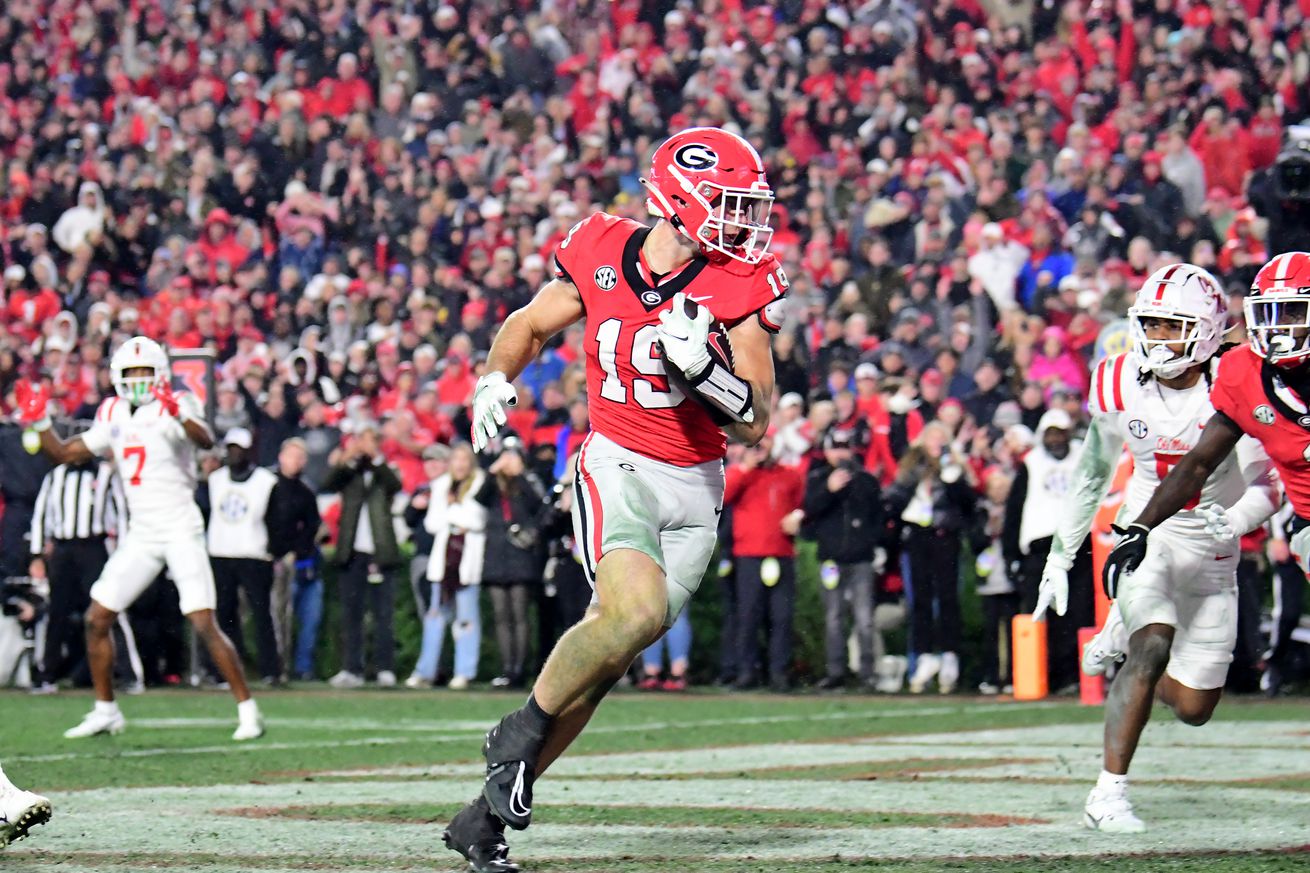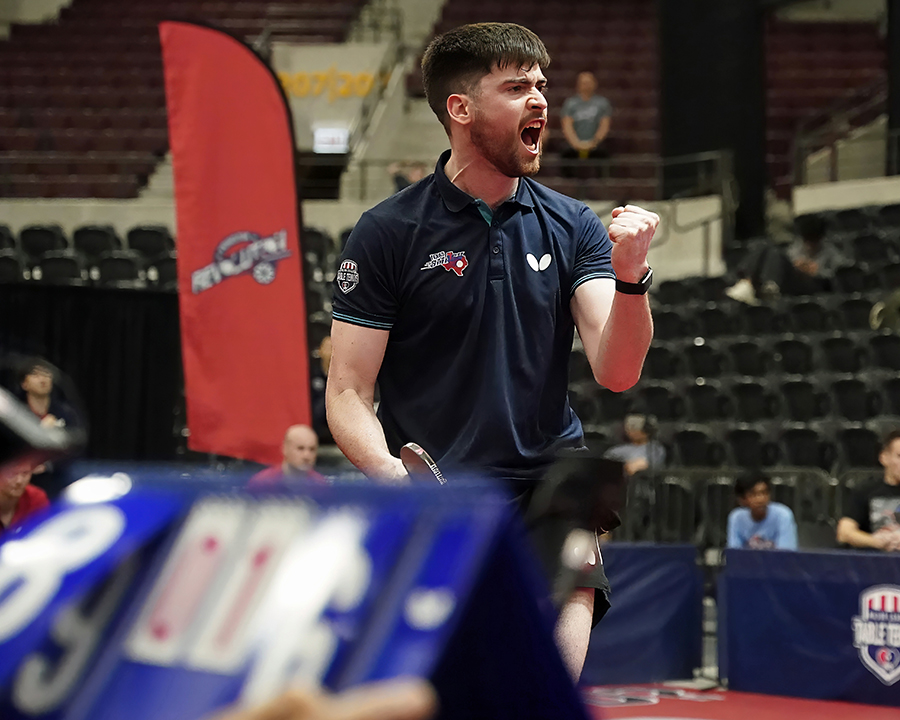
Last week we took at look at reasonable expectations if the Jets pick a wide receiver 10th overall in next week’s NFL Draft.
A lot of the expectations fans and media set for these picks seems arbitrary to me so I looked back at what players selected in that range actually have produced to offer some realistic hopes.
Today I am going to try and do the same with Georgia tight end Brock Bowers. Bowers is a highly regarded tight end prospect. Numerous mock drafts are predicting the Jets will indeed take Bowers tenth overall.
So what are fair expectations for Bowers? Believe it or not, I think we already have them. I laid them out in the article I wrote summing up expectations for wide receivers drafted in the range the Jets are selecting.
I understand tight ends tend to offer more in the blocking game than wide receivers, but let’s be honest. Nobody is picking a tight end in the top ten for his blocking skills. In fact most of the arguments made for picking Bowers so high are some version of, “Don’t think of him as a tight end. Think of him as a receiving weapon.” So I think it is more than fair to judge him by the same criteria as we would judge a wide receiver.
So what are these expectations?
Of the 36 receivers selected between 5 and 15 since the turn of the century, only seven posted over 1,000 yards as a rookie. Garrett Wilson himself is a positive outlier. The medians for rookies are 41 catches, 549 yards, and 3 touchdowns. A rookie wide receiver who surpasses those numbers beats the spread.
How about the long run?
I removed players from the list who have been in the NFL for less than four seasons for sample size purposes. The median player averaged 42.1 yards per game in his career. Multiply that by 17 games, and we are talking about an average of 716 yards per season.
That doesn’t sound so bad. Does it? All Bowers needs to do is throw up around 550 yards as a rookie and average a little over 700 yards per season in his career to be an acceptable pick at his position. That’s not even elite production.
And if you were talking about wide receivers, you would be correct. However, those numbers would put him in pretty rare air for tight ends.
Since the year 2000, only five of the 27 tight ends drafted in the first round surpassed 549 receiving yards in his rookie season. The number only goes up to six if we adjust per game averages to account for rookies who only played in 16 game seasons.
And while the average of 42.1 yards per game seems attainable, only 14 tight ends since the turn of the century with at least 64 starts have averaged it for their careers. For context, 115 wide receivers make the same list.
Of course averages can be skewed by reduced roles early and declines late in a player’s career. So let’s look at seasons where tight ends eclipsed the 716 yard mark since the year 2000. Only eleven tight ends have done it at least five times. They are Tony Gonzalez, Travis Kelce, Jason Witten, Antonio Gates, Zach Ertz, Rob Gronkowski, George Kittle, Greg Olsen, Jimmy Graham, Kellen Winslow II, and Chris Cooley.
I guess you could say this might short circuit the idea that Bowers definitively needs to be a Kelce/Kittle level future Hall of Famer to pay off. The list is loaded with Canton caliber talents like Gonzalez, Kelce, Gates, and Gronkowski, but also has a few lesser players like Winslow and Cooley. But the list is still pretty exclusive. 716 yards doesn’t sound like a lot because we are used to wide receivers regularly breaking it, but the same level of production just doesn’t usually happen at the tight end position. Breaking that total in a career year might not be much to ask, but sustaining it for a player’s prime might be. In the same span, 79 wide receivers posted at least five seasons with at least 716 yards.
All of this speaks to the lack of a margin for error a team will have picking Bowers in the top ten. The wide receiver who finished 27th in receiving yardage in 2023 finished with over 1,000. The tight end who finished second in receiving yardage had 984.
What does this mean? Exactly what it sounds like. If every player was subject to a draft before last season, the 27th most productive wide receiver and still have gotten great value. It would be appreciably more than you would get from the 10th most productive wide receiver.
This speaks to one of the risks of picking Bowers in the top ten. Maybe he doesn’t need to be a perrenial 1,000 yard future Hall of Famer to justify a top ten pick, but he will need to be roughly one of the dozen most productive tight ends of the last quarter century. Being good is enough at wide receiver. Bowers will need to be exceptional.
Here’s the thing about the NFL Draft. For all of the grief front offices get across the league, scouting departments generally do a pretty solid job judging good prospects vs. bad prospect. Yes, there are highly publicized early round busts and late round steals. For the most part, however, the first round in almost every Draft class contains the highest number of players who go on to have a successful career. The second round has the second most and so forth.
The league isn’t nearly as good at separating the creme de la creme from the merely good. Of the eleven tight ends I mentioned earlier, only Gonzalez, Olsen, and Winslow were first round picks. Olsen was picked 31st at the tail end of the first round so even his applicability is questionable.
This speaks to a broader trend. Teams in the NFL are generally very overconfident in their ability to find elite talent. An evergreen article from our sister site Vox a decade ago goes into detail.
A series of papers by economists Cade Massey and Richard Thaler has shown that at any given position, historically, the odds of the top player picked (Watkins) being better than the third player picked (Beckham) is just 55 percent or so.
Using the Stathead database I ran a search of players who were drafted since the year 2000 and have been named First Team All Pro at least twice (excluding punters and kickers). 59 of the 95 were first round picks. However, only half of them were top ten picks.
Again, this suggests the league is pretty good at separating the guys who can play at a high level from those who can’t. Granted it is impressive. The top ten picks comprise 30 percent of the list and under 4 percent of drafted players. But it also suggests there is more of a struggle identifying the top of the top game-changers. You have the same number of going in the top ten as you do later in the first round.
This brings us back to Bowers. He is quite a decorated tight end, and a highly rated prospect. However, as we have seen he will need to be in the top tier of tight ends in the last two and a half decades to justify this selection. However, that kind of projection is inherently difficult to make and prone to error. Given the position he plays and the track record of scouting, expecations should be very high, arguably higher than any team should feel overly confident in projecting.
All of this seems worth considering for the Jets as they make their decision next week.



















You must be logged in to post a comment Login